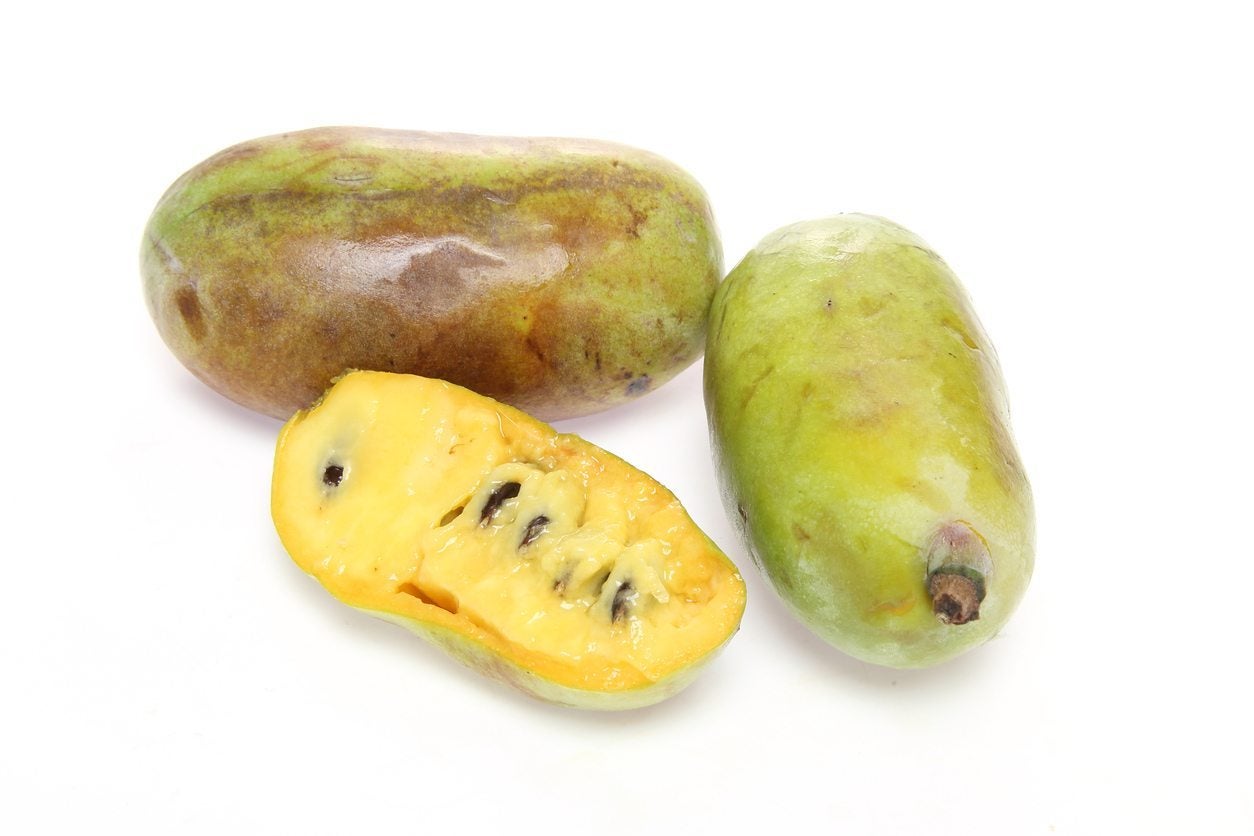
Pawpaw fruit trees (Asimina triloba) are large edible fruit trees native to the United States and the only temperate member of the tropical plant family Annonaceae, or Custard Apple family. This family includes cherimoya and sweetsop as well as several different kinds of pawpaws. What varieties of pawpaw tree are available to the home grower? Read on to find out about the types of pawpaw trees available and other information on the various types of pawpaw trees.
About Pawpaw Fruit Trees
All types of pawpaw fruit trees require warm to hot summer weather, mild to cold winters and consistent rainfall throughout the year. They thrive in USDA zones 5 to 8 and can be found growing wild from south of New England, north of Florida, and as far west as Nebraska. Pawpaw trees are on the small side for fruit trees, about 15 to 20 feet (5-6 m.) in height. Although naturally they have a bushy, suckering habit, they can be pruned and trained into a single trunk, pyramid-shaped tree. Since the fruit is too soft and perishable for shipping, pawpaw is not commercially grown and marketed. Pawpaw trees have significant resistance to pests, as their leaves and twigs contain a natural pesticide. This natural pesticide also seems to deter browsing animals such as deer. The flavor of pawpaw fruit is said to be like a blend of mango, pineapple, and banana-- a veritable potpourri of tropical fruit and is, in fact, often called the ‘banana of the north.’ While most people enjoy the flavor of pawpaw fruit, some apparently have an adverse reaction to ingesting it, resulting in stomach and intestinal pain.
Pawpaw Tree Varieties
Many different kinds of pawpaws are available from nurseries. These are either seedlings or grafted named cultivars. Seedlings are usually a year of age and are less costly than grafted trees. Seedlings are not clones of the parent trees, so fruit quality can’t be guaranteed. Grafted cultivars, however, are trees that have been grafted to a named cultivar, ensuring that the qualities of the named cultivar have been passed to the new tree. Grafted pawpaw trees are usually two years old. Whichever you purchase, be aware that pawpaws need another pawpaw to fruit. Purchase at least two genetically different trees, meaning two different cultivars. Since pawpaws have a delicate tap root and root system that can be easily damaged when dug up, container grown trees have a higher success or survival rate than field dug trees.
Varieties of Pawpaw Tree
There are now many cultivars of pawpaw to be had, each bred or selected for a particular characteristic. Some of the more common varieties include:
- Sunflower
- Taylor
- Taytwo
- Mary Foos Johnson
- Mitchel
- Davis
- Rebeccas Gold
New varieties developed for the mid-Atlantic include Susquehanna, Rappahannock, and Shenandoah. Most of the cultivars available have been selected from a wild cultivar, although some are hybrids. Examples of wild bred seedlings are the PA-Golden series, Potomac, and Overleese. Hybrids include IXL, Kirsten, and NC-1.
Sign up for the Gardening Know How newsletter today and receive a free copy of our e-book "How to Grow Delicious Tomatoes".

Amy Grant has been gardening for 30 years and writing for 15. A professional chef and caterer, Amy's area of expertise is culinary gardening.
